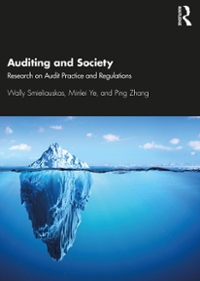Question
On January 1, Year 4, Goodkey Co. acquired all of the common shares of Jingya. The condensed income statements for the two companies for January,
On January 1, Year 4, Goodkey Co. acquired all of the common shares of Jingya. The condensed income statements for the two companies for January, Year 5, were as follows:
| Goodkey | Jingya | |||||
| Sales | $ | 11,100,000 | $ | 6,110,000 | ||
| Gain on sale of equipment | 262,000 | |||||
| Other income | 910,000 | 61,000 | ||||
| 12,010,000 | 6,433,000 | |||||
| Depreciation expense | 560,000 | 191,000 | ||||
| Other expenses | 6,710,000 | 4,410,000 | ||||
| Income tax expense | 2,013,000 | 549,600 | ||||
| 9,283,000 | 5,150,600 | |||||
| Net income | $ | 2,727,000 | $ | 1,282,400 | ||
The following transactions occurred in January, Year 5, and are properly reflected in the income statements above:
On January 1, Year 5, Jingya sold equipment to Goodkey for $1,110,000 and reported a gain of $262,000. On this date, the equipment had a remaining useful life of four years.
On January 31, Year 5, Jingya paid a dividend of $710,000.
Goodkey uses the cost method to account for its investment in Jingya. Both companies pay income tax at the rate of 40%.
Step by Step Solution
There are 3 Steps involved in it
Step: 1

Get Instant Access to Expert-Tailored Solutions
See step-by-step solutions with expert insights and AI powered tools for academic success
Step: 2

Step: 3

Ace Your Homework with AI
Get the answers you need in no time with our AI-driven, step-by-step assistance
Get Started


